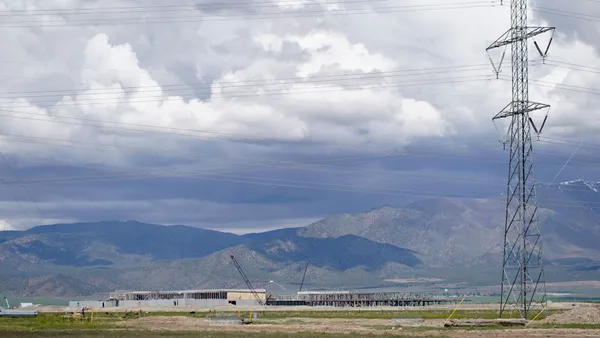Dive Brief:
- New York regulators on Monday approved a Clean Energy Standard that mandates the state get half its power from renewable sources by 2030 and guarantees income for three struggling upstate nuclear power plants to keep them from shuttering.
- The unanimous decision will direct $965 million in additional revenue to the Fitzpatrick, Ginna and Nine Mile plants over the first two years of the program, Bloomberg reports, with adjustments every two years until 2029.
- The state has set a aggressive implementation schedule, requiring utilities and energy service companies to begin serving up 26.31% renewable power starting next year, and will grow to 30.54% by 2021.
Dive Insight:
The New York Public Service Commission voted today on a 50% renewable standard that officials say will reduce greenhouse gas emissions 40% by 2030, ensure the state's power mix is diverse, and attract billions in clean energy investment.
Gov. Andrew Cuomo called the decision a "bold action" that positions New York as a national leader in the clean energy economy.
"This Clean Energy Standard shows you can generate the power necessary for supporting the modern economy while combatting climate change," Cuomo said in a statement announcing the decision. "Make no mistake, this is a very real threat that continues to grow by the day and I urge all other states to join us in this fight for our very future."
The new standard includes "concrete, cost-effective steps today to safeguard this state’s environment for decades to come," Cuomo said. New York will enforce the standard by requiring utilities and other energy suppliers to obtain a targeted number of Renewable Energy Credits each year, which will be paid to renewable developers.
A key component of the CES is a subsidy plan to support the state's struggling nuclear power plants, which have been losing out in the marketplace largely due to cheap natural gas. The standard would direct about $965 million to the plants over the first two years, using a formula based on expected power costs and the social price on carbon federal government agencies use in rulemaking.
The vote could have an immediate impact on utility plans in the state. Last year, Entergy Corp. announced plans to shut down its James A. FitzPatrick plant. But in July, the company revealed it was in talks with Exelon to possibly sell the facility rather than closing up shop. Exelon agreed to purchase the plant if the nuclear subsidies were approved, throwing a lifeline to 838 MW of carbon-free generation.
The PSC's original clean energy standard called for $7 billion in income supports over 12 years, and it is unclear how the changes to the program will affect the sale. The CES also includes subsidies for wind and solar, which reportedly would have cost between $22/MWh and $35/MWh in recent years. The nuclear subsidy will start at $17.48/MWh.
The nuclear subsidy also could face legal challenges, as the auction mechanism delves into new territory. This spring, U.S. Supreme Court struck down a plan in Maryland that would have incentivized new in-state power generation by setting a price floor and having ratepayers make up the difference if the plants were unprofitable in wholesale auctions.
Opponents of power subsidies in Ohio have considered Hughes v. Talen Energy Marketing as a route to block ratepayer support in that state, and a similar challenge could come into play in New York. Last week at a utility regulatory conference, executives for gas generator Calpine told Utility Dive they considered the draft clean energy standard proposal to be in conflict with the Supreme Court ruling, and expected a legal challenge if it was approved.
"We feel like it's tied to the wholesale market," Sarah Novosel, Calpine senior vice president for government affairs and managing counsel, said of the draft proposal. "The Court said in Hughes that as long as an action is untethered to the wholesale market it might permissible. We think it it tethered to the wholesale market."
In its final order, the PSC acknowledged the risks of the Hughes case, but said that critics of the draft proposal had failed to propose other mechanisms to keep the nuclear generation online while remaining "untethered" from the wholesale market.
"Those opposed to [the Zero Emission Credit] do not offer a method of setting ZEC prices by alternatively valuing the damage caused by carbon emissions," regulators wrote. "Instead, [the City of New York] and others propose different methodologies that fail to recognize the need to keep the ZEC pricing methodology untethered to a generator's wholesale market participation."
This post has been updated to include details from the final order and input from generator Calpine.














